Hach TitraLab AT1000 Series User manual
- Category
- Measuring, testing & control
- Type
- User manual
This manual is also suitable for

DOC022.52.93074
TitraLab
®
AT1000 series workstations
User Manual
03/2019, Edition 7


Table of Contents
Section 1 Specifications.................................................................................................................... 3
Section 2 General information......................................................................................................... 5
2.1 Safety information........................................................................................................................ 5
2.1.1 Use of hazard information................................................................................................... 5
2.1.2 Precautionary labels............................................................................................................ 5
2.1.3 Certification......................................................................................................................... 6
2.1.4 Restriction of hazardous substances (RoHS)..................................................................... 6
2.2 Product overview.......................................................................................................................... 7
2.3 Instrument connections................................................................................................................ 9
2.4 Product components.................................................................................................................... 9
Section 3 Installation........................................................................................................................ 11
3.1 Installation guidelines................................................................................................................. 11
3.2 Connect to AC power................................................................................................................. 11
3.3 Install the syringe....................................................................................................................... 12
3.4 Install the sensor storage tubes................................................................................................. 13
3.5 Install the stir bar and the beaker............................................................................................... 13
3.6 Prepare the tubes....................................................................................................................... 13
3.7 Connect the tubes...................................................................................................................... 14
3.8 Install the sensor........................................................................................................................ 14
3.8.1 Install the legacy adapter.................................................................................................. 14
3.8.1.1 Set the legacy adapter settings................................................................................ 15
3.8.2 Connect the sensor........................................................................................................... 15
3.9 Install the titrant and the reagent................................................................................................ 16
3.10 Tidy the work area.................................................................................................................... 17
Section 4 Install accessories..........................................................................................................19
4.1 Install an external pump............................................................................................................. 19
4.2 Install an external propeller........................................................................................................ 21
4.3 Install a balance......................................................................................................................... 21
4.4 Install PC software..................................................................................................................... 22
4.5 Install the syringe verification kit................................................................................................ 22
Section 5 User interface and navigation......................................................................................25
5.1 Keypad....................................................................................................................................... 25
5.2 Home screen.............................................................................................................................. 25
5.3 Menu structure........................................................................................................................... 26
Section 6 Startup............................................................................................................................... 29
6.1 Configure the instrument............................................................................................................ 29
6.2 Install the applications................................................................................................................ 30
6.3 Prepare the instrument for measurement.................................................................................. 30
Section 7 Standard operations...................................................................................................... 33
7.1 Calibration.................................................................................................................................. 33
7.1.1 Calibrate the sensor.......................................................................................................... 33
7.1.2 Calibrate the titrant............................................................................................................ 34
7.1.3 Auto leveling calibration.................................................................................................... 35
7.2 Sample preparation.................................................................................................................... 36
7.3 Get a sample measurement....................................................................................................... 36
7.4 Change the application settings................................................................................................. 38
7.4.1 Sample name.................................................................................................................... 38
7.5 Manage the data log.................................................................................................................. 39
7.6 Purge..........................................................................................................................................39
1

Section 8 Maintenance..................................................................................................................... 41
8.1 Maintenance schedule............................................................................................................... 41
8.2 Clean the instrument.................................................................................................................. 41
8.3 Clean the sensor........................................................................................................................ 41
8.4 Replace the tubes...................................................................................................................... 42
8.5 Replace desiccant cartridge contents........................................................................................ 42
8.6 Replace the syringe electro-valve block..................................................................................... 42
8.7 Maintenance menu..................................................................................................................... 42
8.7.1 Syringe activation.............................................................................................................. 43
8.7.2 Pump activation................................................................................................................. 43
8.7.3 Syringe management........................................................................................................ 43
8.7.4 Syringe verification............................................................................................................ 43
8.7.5 Pump cassette replacement.............................................................................................. 44
8.7.6 Other maintenance options............................................................................................... 45
8.8 Storage and transportation......................................................................................................... 46
8.8.1 Prepare the instrument for storage....................................................................................46
8.8.2 Prepare the instrument for short-term storage.................................................................. 47
8.8.3 Prepare the instrument for shipment................................................................................. 47
Section 9 Troubleshooting..............................................................................................................49
Section 10 Replacement parts and accessories........................................................................57
Appendix A Change application parameters.............................................................................. 63
Appendix B Frequently asked questions.................................................................................... 73
Section 13 Configure the instrument........................................................................................... 75
Table of Contents
2

Section 1 Specifications
Specifications are subject to change without notice.
Specification Details
Dimensions (W x D x H) 22 x 40 x 36 cm (8.7 x 15.7 x 14.2 in.)
Weight 4 kg (8.8 lb)
Power requirements 100–240 VAC, 50/60 Hz
Altitude 2,000 m (6,562 ft) maximum
Operating temperature 15 to 35 °C (59 to 95 °F)
Relative humidity 20 to 80%, non-condensing
Storage temperature –5 to 40 °C (23 to 104 °F)
Installation category II
Pollution degree 2
Certifications Safety IEC/EN 61010-1; EMC IEC/EN 61326-1
EMC requirements This product is intended to be used in a domestic or basic
electromagnetic environment
Warranty 1 year (EU: 2 years)
3

Specifications
4

Section 2 General information
In no event will the manufacturer be liable for direct, indirect, special, incidental or
consequential damages resulting from any defect or omission in this manual. The
manufacturer reserves the right to make changes in this manual and the products it
describes at any time, without notice or obligation. Revised editions are found on the
manufacturer’s website.
2.1 Safety information
N O T I C E
The manufacturer is not responsible for any damages due to misapplication or misuse of this
product including, without limitation, direct, incidental and consequential damages, and disclaims
such damages to the full extent permitted under applicable law. The user is solely responsible to
identify critical application risks and install appropriate mechanisms to protect processes during a
possible equipment malfunction.
Please read this entire manual before unpacking, setting up or operating this equipment.
Pay attention to all danger and caution statements. Failure to do so could result in serious
injury to the operator or damage to the equipment.
Make sure that the protection provided by this equipment is not impaired. Do not use or
install this equipment in any manner other than that specified in this manual.
2.1.1 Use of hazard information
D A N G E R
Indicates a potentially or imminently hazardous situation which, if not avoided, will result in death
or serious injury.
W A R N I N G
Indicates a potentially or imminently hazardous situation which, if not avoided, could result in
death or serious injury.
C A U T I O N
Indicates a potentially hazardous situation that may result in minor or moderate injury.
N O T I C E
Indicates a situation which, if not avoided, may cause damage to the instrument. Information that
requires special emphasis.
2.1.2 Precautionary labels
Read all labels and tags attached to the instrument. Personal injury or damage to the
instrument could occur if not observed. A symbol on the instrument is referenced in the
manual with a precautionary statement.
This symbol, if noted on the instrument, references the instruction manual for operation and/or safety information.
This symbol indicates that a risk of electrical shock and/or electrocution exists.
5

This symbol indicates the presence of devices sensitive to Electro-static Discharge (ESD) and indicates that care
must be taken to prevent damage with the equipment.
Electrical equipment marked with this symbol may not be disposed of in European domestic or public disposal
systems. Return old or end-of-life equipment to the manufacturer for disposal at no charge to the user.
2.1.3 Certification
C A U T I O N
This equipment is not intended for use in residential environments and may not provide adequate
protection to radio reception in such environments.
Canadian Radio Interference-Causing Equipment Regulation, IECS-003, Class A:
Supporting test records reside with the manufacturer.
This Class A digital apparatus meets all requirements of the Canadian Interference-
Causing Equipment Regulations.
Cet appareil numérique de classe A répond à toutes les exigences de la réglementation
canadienne sur les équipements provoquant des interférences.
FCC Part 15, Class "A" Limits
Supporting test records reside with the manufacturer. The device complies with Part 15 of
the FCC Rules. Operation is subject to the following conditions:
1. The equipment may not cause harmful interference.
2. The equipment must accept any interference received, including interference that
may cause undesired operation.
Changes or modifications to this equipment not expressly approved by the party
responsible for compliance could void the user's authority to operate the equipment. This
equipment has been tested and found to comply with the limits for a Class A digital
device, pursuant to Part 15 of the FCC rules. These limits are designed to provide
reasonable protection against harmful interference when the equipment is operated in a
commercial environment. This equipment generates, uses and can radiate radio
frequency energy and, if not installed and used in accordance with the instruction manual,
may cause harmful interference to radio communications. Operation of this equipment in
a residential area is likely to cause harmful interference, in which case the user will be
required to correct the interference at their expense. The following techniques can be
used to reduce interference problems:
1. Disconnect the equipment from its power source to verify that it is or is not the source
of the interference.
2. If the equipment is connected to the same outlet as the device experiencing
interference, connect the equipment to a different outlet.
3. Move the equipment away from the device receiving the interference.
4. Reposition the receiving antenna for the device receiving the interference.
5. Try combinations of the above.
2.1.4 Restriction of hazardous substances (RoHS)
Dieses Informationsblatt enthält Angaben, die ausschließlich für den Export dieses
Gerätes in die Volksrepublik China erforderlich sind.
This document contains information which is only required for the export of this
instrument into the People's Republic of China.
本手册包含的必要信息只适用于出口到中华人民共和国的仪器。
Type: AT1xxx
General information
6

Name: TitraLab AT1000
Table 1 有毒有害物质或元素 (Hazardous Substance)
部件名称 (Parts) 铅 (Pb) 汞 (Hg) 镉 (Cd) 六价铬 (Cr6+) 多溴联苯 (PBB) 多溴二苯醚 (PBDE)
电 阻 (Resistor)
X O O O O O
二极管 ( Diode)
X O O O O O
O:
表示该部件中有毒有害物质在所有均质材料中的含量均为 SJ/T11363-2006 标准规定的限量要求以下
Indicates that the concentration of the hazardous substance in all homogeneous materials in the parts is below the
relevant threshold of the SJ/T11363-2006 standard.
X:
表示该部件中有毒有害物质至少在某一均质材料中的含量超出 SJ/T11363-2006 标准规定的限量要求
Indicates that the concentration of the hazardous substance of at least one of all homogeneous materials in the parts
is above the threshold of the SJ/T11363-2006 standard.
对销售之日的所售产品, 本表显示, 朗讯供应链的电子信息产品可能包含这些物质。注意: 在所售产品中可能会也可能不会含有
所有所列的部件
This table shows where these substances may be found in the supply chain of "Company" electronic information products, as
of the date of sale of the enclosed product. Note that some of the component types listed above may or may not be a part of
the enclosed product.
除非另外特别的标注, 此标志为针对所涉及产品的环保使用期标志. 某些可更换的零部件会有一个不同的环保使用
期( 例如, 电池单元模块) 贴在其产品上. 此环保使用期限只适用于产品的手册中所规定的条件下工作.
The Environmentally Friendly Use Period (EFUP) for all enclosed products and their parts are per the symbol
shown here, unless otherwise marked. Certain field-replaceable parts have a different EFUP (for example,
battery modules) and so are marked to reflect such. The Environmentally Friendly Use Period is valid only
when the product is operated under the conditions defined in the product manual.
2.2 Product overview
The instrument operates with digital and analog sensors. Measurement applications are
installed on the instrument to automate the measurement process. Instructions show on
the display when user intervention is required.
General information
7

1 Keypad 6 Beaker 11 Sensor holder
2 Display 7 Syringe protection cover 12 Pump 2 input/output
3 Sensor storage tubes 8 Syringe input/output 13 Pump 1 input/output
4 USB port
1
9 Tube clips 14 Pump access cover
5 Tube holder 10 Syringe
Note: Depending on the model, there will be 1 or 2 syringes and syringe input/output ports, and 0,
1 or 2 pumps. Refer to Table 2.
Table 2 Instrument configurations
Model Syringes Pumps
AT1102 1 0
AT1112 1 1
AT1122 1 2
AT1222 2 2
1
A second USB port is found on the rear of the instrument, but the instrument recognizes only one USB storage
device connection at a time.
General information
8

2.3 Instrument connections
Use the USB port on the side of the instrument for the USB applications key supplied with
the instrument. Use the USB port on the rear of the instrument to connect to a printer,
mouse, keyboard or a USB hub.
1 24 V external power supply port 4 External pump port 7 USB port
2 Sensor 1 port 5 External propeller port 8 Ethernet port
3 Sensor 2 port 6 Serial port
2.4 Product components
Make sure that all components have been received. Refer to the packing list in the box. If
any items are missing or damaged, contact the manufacturer or a sales representative
immediately.
Figure 1 Contents of the instrument box
Note: For identification, the outlet tube from the syringe is fitted with a blue marker.
1 Instrument 3 Sensor storage tubes (3x) 5 Power cord
2 Tube holder (1 for each syringe
position on the instrument)
4 Power supply
General information
9

Figure 2 Contents of the application box
1 Beakers (5 x 50 mL and 5 x 150 mL) 7 Syringe holding ring (1 for each syringe)
2 Tube with anti-diffusion tip (if necessary for the
application)
8 Syringe (refer to Table 2 on page 8 for quantity)
3 Conical adapters (quantity depends on application) 9 USB applications key
4 Magnetic stir bars 10 Glass bottles (not in all application kits)
5 Legacy sensor adapter (not in all application kits) 11 Bottle caps (type and quantity depends on application)
6 Sensor (type and quantity depends on application)
General information
10

Section 3 Installation
C A U T I O N
Multiple hazards. Only qualified personnel must conduct the tasks described in this
section of the document.
N O T I C E
This is a class A product. There may be potential difficulties in ensuring electromagnetic
compatibility in other environments, due to conducted as well as radiated disturbances. In a
domestic environment this product may cause radio interference in which case the user may be
required to take adequate measures.
N O T I C E
Network and access point security is the responsibility of the customer that uses the wireless
instrument. The manufacturer will not be liable for any damages, inclusive however not limited to
indirect, special, consequential or incidental damages, that have been caused by a gap in, or
breach of network security.
The instrument is available in different configurations (refer to Table 2 on page 8). This
manual supplies instructions for the installation of an instrument with one syringe and one
pump. Adjust the installation procedure as applicable to accommodate the number of
syringes and pumps in the instrument.
3.1 Installation guidelines
• This instrument is for indoor use only.
• The power supply connector on the rear panel must be easily accessible so the
power can be disconnected quickly in case of emergency.
• Keep the instrument away from temperature extremes, including heaters, direct
sunlight and other heat sources.
• Put the instrument on a stable and level surface in a well ventilated place.
• Make sure that there is at least 15 cm (6 in.) of space on all sides of the instrument to
prevent electrical parts from overheating.
• Do not operate or keep the instrument in dusty, damp or wet locations.
• Always keep the surface of the instrument and all accessories dry and clean.
3.2 Connect to AC power
D A N G E R
Electrocution hazard. If this equipment is used outdoors or in potentially wet locations, a
Ground Fault Circuit Interrupt (GFCI/GFI) device must be used for connecting the
equipment to its main power source.
C A U T I O N
Electrical shock and fire hazards. Make sure that the supplied cord and non‐locking plug
meet the applicable country code requirements.
W A R N I N G
Fire hazard. Use only the external power supply that is specified for this instrument.
11

1. Connect the power cord to the power supply.
2. Connect the power supply to the instrument (refer to Instrument connections
on page 9).
3. Connect the power cord to an electrical outlet.
3.3 Install the syringe
Before syringe installation, set the instrument power to on. Push the power button on the
front of the instrument. Make sure that the startup sequence shows on the display. The
syringe holder lowers to its operating position.
Note: Ignore any warning messages related to missing applications that show on the display.
The sensor holder has two positions: one over the magnetic stirrer and the second at
180° to the right. Move the sensor holder away from the instrument to the second
position.
Refer to the illustrated steps that follow.
C A U T I O N
In step 6, tighten the syringe using the metallic part at the top. Do not hold the glass section of the
syringe. Do not tighten too much.
To install a second syringe, do steps 5 through 7 again.
Installation
12

3.4 Install the sensor storage tubes
Put the three sensor storage tubes into the holder that is on the side of the instrument
(refer to Product overview on page 7). Keep the sensor in a storage tube when not in use.
3.5 Install the stir bar and the beaker
Add the stir bar to the beaker, and then attach the beaker to the sensor holder.
3.6 Prepare the tubes
Remove any bends in the end of the tubes.
Installation
13

3.7 Connect the tubes
Arrow symbols identify the inlet and outlet ports for the syringe and the pump
connections. The “up” arrow is the outlet port. The “down” arrow is the inlet port. Turn the
tube connectors on the inlet and outlet ports of the syringe and pump until they click.
The syringe outlet tube has a blue ring on it. If anti-diffusion tips are necessary, remove
the pre-installed outlet tube from the syringe and install the tube from the application kit
with the pre-installed anti-diffusion tip.
Push the outlet tubes into the tube holder slots so that they are correctly attached.
3.8 Install the sensor
3.8.1 Install the legacy adapter
Go to Connect the sensor on page 15 if no legacy adapter is included in the application
kit.
1. Connect the measuring, reference and temperature sensors to the legacy adapter.
2. Make sure that the instrument display shows the Home screen. Connect the legacy
adapter cable to a sensor socket on the rear panel of the instrument.
Installation
14

1 Temperature sensor 2 Reference sensor 3 Measuring sensor
3. The legacy adapter commissioning wizard automatically starts. Follow the instructions
that show on the display. Select the parameter based on the connected sensor.
Option Description
pH Select this parameter if the connected sensor is a pH analogic sensor.
Metal/RedOX/Color Select this parameter if the connected sensor is a Pt-Pt (metallic)
analogic sensor or PTM450/OPT300 sensor.
ISE Select this parameter if the connected sensor is an ion selective
sensor.
Refer to the application documentation to enter the related information for the
selected parameter.
3.8.1.1 Set the legacy adapter settings
Do the steps that follow to set a sensor name in the legacy adapter settings or set the
legacy adapter settings.
1. Make sure that the legacy adapter is connected to the instrument.
2. From the home screen, select Settings>Legacy settings and then push Select.
3. If more than one legacy adapter is connected, select the legacy adapter to change
the settings.
4. Select an option
2
. Refer to the application notes for additional information.
Option Description
Input sensor name Enters the name of the sensor used. If specified, follow the
recommendations on the application notes for the sensor name.
Input manual
temperature
Sets the temperature used in the titration if no temperature sensor
is connected.
Input pHIso (pH parameter only) Sets the pH ISO value (default=7).
Reset settings Sets the legacy adapter settings to the default configuration. Starts
the legacy adapter commissioning wizard.
3.8.2 Connect the sensor
Use a conical adapter to hold the sensor tightly in the sensor holder.
2
The options shown are based on the parameter selected on the legacy adapter commisioning wizard.
Installation
15

Connect the sensor to an available sensor port on the rear of the instrument. After the
sensor is connected, make sure that the sensor icon shows in the banner at the top of the
display.
N O T I C E
Make sure that the sensor tip is 5 to 10 mm above the top of the magnetic stir bar to prevent any
contact with the bar during operation.
Refer to the illustrated steps that follow.
3.9 Install the titrant and the reagent
C A U T I O N
Chemical exposure hazard. Obey laboratory safety procedures and wear all of the
personal protective equipment appropriate to the chemicals that are handled. Refer to the
current safety data sheets (MSDS/SDS) for safety protocols.
Installation
16

N O T I C E
This is only applicable to instruments with two syringes installed.
It is recommended to install the applications (refer to Install the applications on page 30) before
installing the titrant. Applications using titrant from syringe 1 are loaded on line 1 of the home
screen (refer to Home screen on page 25) and applications using titrant from syringe 2 are
loaded on line 2. After the applications are installed, the correct titrant can be connected to the
applicable syringe.
Optional: Fill a desiccant cartridge with an applicable desiccant. Put the desiccant
cartridge into the adapter on the titrant bottle cap. Refer to the illustrated steps that follow,
step 1.
Loosen the tube connector on the bottle cap. Push the inlet tube through the connector.
Make sure that the end of the tube is at the bottom of the bottle. Tighten the connector on
the bottle cap.
Use the same procedure to connect the second titrant bottle if a second syringe is
installed on the instrument.
Refer to the "Application Note" on the USB applications key to identify the correct pump
to connect to the reagent bottle. Refer to the illustrated steps that follow.
3.10 Tidy the work area
Attach the tubes to the instrument with the clips on the electrovalve and the sensor
holder. Refer to the illustrated steps that follow.
Installation
17

Installation
18
Page is loading ...
Page is loading ...
Page is loading ...
Page is loading ...
Page is loading ...
Page is loading ...
Page is loading ...
Page is loading ...
Page is loading ...
Page is loading ...
Page is loading ...
Page is loading ...
Page is loading ...
Page is loading ...
Page is loading ...
Page is loading ...
Page is loading ...
Page is loading ...
Page is loading ...
Page is loading ...
Page is loading ...
Page is loading ...
Page is loading ...
Page is loading ...
Page is loading ...
Page is loading ...
Page is loading ...
Page is loading ...
Page is loading ...
Page is loading ...
Page is loading ...
Page is loading ...
Page is loading ...
Page is loading ...
Page is loading ...
Page is loading ...
Page is loading ...
Page is loading ...
Page is loading ...
Page is loading ...
Page is loading ...
Page is loading ...
Page is loading ...
Page is loading ...
Page is loading ...
Page is loading ...
Page is loading ...
Page is loading ...
Page is loading ...
Page is loading ...
Page is loading ...
Page is loading ...
Page is loading ...
Page is loading ...
Page is loading ...
Page is loading ...
Page is loading ...
Page is loading ...
Page is loading ...
Page is loading ...
-
 1
1
-
 2
2
-
 3
3
-
 4
4
-
 5
5
-
 6
6
-
 7
7
-
 8
8
-
 9
9
-
 10
10
-
 11
11
-
 12
12
-
 13
13
-
 14
14
-
 15
15
-
 16
16
-
 17
17
-
 18
18
-
 19
19
-
 20
20
-
 21
21
-
 22
22
-
 23
23
-
 24
24
-
 25
25
-
 26
26
-
 27
27
-
 28
28
-
 29
29
-
 30
30
-
 31
31
-
 32
32
-
 33
33
-
 34
34
-
 35
35
-
 36
36
-
 37
37
-
 38
38
-
 39
39
-
 40
40
-
 41
41
-
 42
42
-
 43
43
-
 44
44
-
 45
45
-
 46
46
-
 47
47
-
 48
48
-
 49
49
-
 50
50
-
 51
51
-
 52
52
-
 53
53
-
 54
54
-
 55
55
-
 56
56
-
 57
57
-
 58
58
-
 59
59
-
 60
60
-
 61
61
-
 62
62
-
 63
63
-
 64
64
-
 65
65
-
 66
66
-
 67
67
-
 68
68
-
 69
69
-
 70
70
-
 71
71
-
 72
72
-
 73
73
-
 74
74
-
 75
75
-
 76
76
-
 77
77
-
 78
78
-
 79
79
-
 80
80
Hach TitraLab AT1000 Series User manual
- Category
- Measuring, testing & control
- Type
- User manual
- This manual is also suitable for
Ask a question and I''ll find the answer in the document
Finding information in a document is now easier with AI
Related papers
-
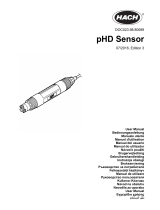 Hach pHD Sensor User manual
Hach pHD Sensor User manual
-
 Hach TitraLab KF1000 Series User manual
Hach TitraLab KF1000 Series User manual
-
 Hach TitraLab KF1121 User manual
Hach TitraLab KF1121 User manual
-
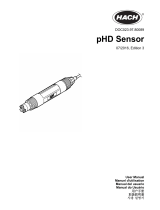 Hach pHD Sensor User manual
Hach pHD Sensor User manual
-
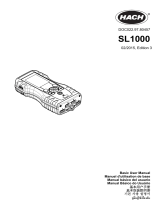 Hach Hach SL1000 Basic User Manual
Hach Hach SL1000 Basic User Manual
-
Hach TitraLab AT1222 Basic User Manual
-
Hach TitraLab AT1000 Series Basic User Manual
-
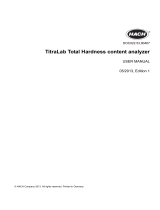 Hach TitraLab User manual
Hach TitraLab User manual
-
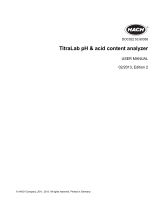 Hach TitraLab User manual
Hach TitraLab User manual
-
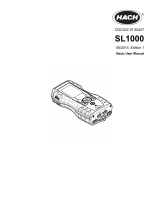 Hach Hach SL1000 Basic User Manual
Hach Hach SL1000 Basic User Manual
Other documents
-
BANTE JB-1A User guide
-
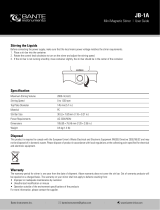 Bante Instruments JB-1A Magnetic Stirrer Owner's manual
Bante Instruments JB-1A Magnetic Stirrer Owner's manual
-
Hanna Instruments HI934 Owner's manual
-
Hanna Instruments HI904-01 Owner's manual
-
Hanna Instruments HI84500-01 Owner's manual
-
Hanna Instruments HI933 Owner's manual
-
Hanna Instruments HI903-01 Owner's manual
-
Hanna Instruments HI931 User manual
-
Hanna Instruments HI84533U-01 Owner's manual
-
Hanna Instruments HI932 Owner's manual
























































































